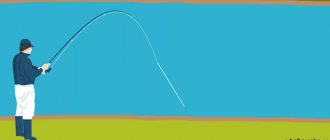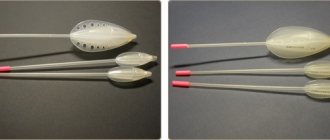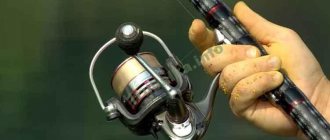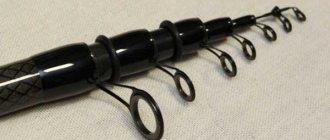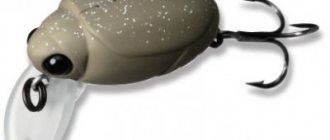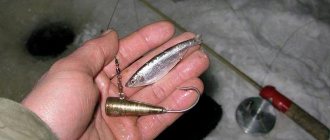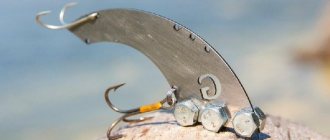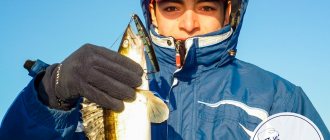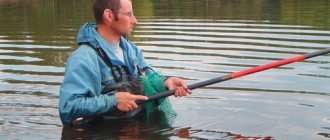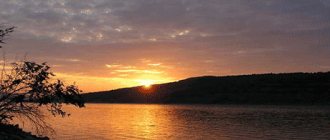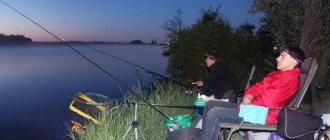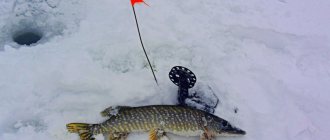The ide is one of the most common fish species that belongs to the carp family. It has a rather timid character, so catching it must be accompanied by a number of additional measures. Externally it can be described as follows:
- It has a significant visual resemblance to roach, but experienced anglers can distinguish ide by its smaller scale structure and yellow eyes. Sometimes they have a green tint and have a fairly bright orange iris.
- The body color is gray with a silvery tint, the abdominal part always has a lighter shade than the back area. The older the individual, the more contrasting color its body acquires.
- The body of the fish is quite high and at the same time thick.
- The head is large in size, the mouth, on the contrary, is small.
- The fins located on the back and tail are the same color as the body, but with a hint of purple.
- The lower rear and pectoral fins are distinguished by a bright red color.
- The scales are usually small or medium in size; on the sides, each scale has a barely noticeable golden sheen.
- The maximum dimensions are 90 cm with a body weight of 6 kg, but the most common individuals are from 35 to 50 cm with a weight of about 2-3 kg.
Habitats
Its wide distribution is due to the unpretentious attitude of this fish to the environment. In particular, it is not afraid of sudden changes in temperature, changes in the chemical composition of the reservoir or harsh weather conditions. However, in most cases, ide prefers to choose places to settle that meet any of the following conditions:
- The presence of sandy-pebble or leafy gristle type soil on the bottom surface.
- The presence of abundant algae, especially if the soil in this place is clean. Such places are the most favorite for this breed of fish to settle in.
- Sunken snags, if the bottom surface beneath them is not covered with silt, can be resting places for ide.
- Pits in the bottom surface, which are located below the rifts.
- Whirlpools in which there is a quiet current of a circular type.
- Places that are the boundaries of currents with different levels of swiftness.
- Quiet places near bridge supports.
- Area around sunken trees or other objects.
- In rivers, ide can often be found near the steepest banks, as well as in places with very muddy water, especially after significant amounts of precipitation.
- Shallow water and various shallows located in the immediate vicinity of the pits, but in such places the ide can be found mainly only at night, when it gets out of secluded places in search of food.
This breed has become widespread throughout the middle zone, as well as in Siberian reservoirs and right up to Kolyma itself.
Choosing a fishing rod and its equipment
The first step is to decide on the type of float rod. It is chosen based on fishing conditions and personal preferences.
Types of float gear
Flywheel
A fly rod is the simplest of float tackles. It consists of a rod without guides and a fishing line with a float, sinkers, a leash and hooks. This type of gear is reminiscent of the fishing rods that probably every novice fisherman used to fish in childhood. There is nothing superfluous in the swing.
Many people use rods with guides and reels as fly rods. The required amount of fishing line is released from the reel, which corresponds to the length of the rod, after which you can start fishing. But the disadvantage of such tackle is that it is much heavier than a fly rod due to the presence of a reel and guide rings.
Match
A match fishing rod is a float tackle for long-cast fishing. It is perfect if you want to catch ide from the shore, casting 30–40 m and further. Modern fly rods consist of several elbows with a plug connection.
You need to put a reel on this rod. Catching ide on a float with a match fishing rod involves the use of small inertia-free rods with a gear ratio from 6:1 to 7:1. In match fishing, reels with rear adjustment of the friction brake are used.
Bolognese
The Bolognese fishing rod is a tackle designed primarily for fishing in currents with a retrieve. But it can be caught both as a fly rod and as a match rod. Bolognese tackle consists of a rod with guide rings on which a reel is attached.
More often, inertia-free gears like those used in the match are used - small, with a gear ratio from 6:1 to 7:1. With them you can make long casts with light equipment without any problems. Another option is to use inertial wire reels. With such a reel, it will not be possible to cast equipment over a long distance as with a spinning reel. The throwing distance will be much shorter. But they are suitable for line fishing and fly-style fishing.
Plug
A plug fishing rod is a float tackle that consists of a long, up to 20 m, main part of the blank and a short tip - the top kit. A rubber shock absorber is attached inside the tip, to which the fishing line is mounted. The length of the plug fishing rod rig is small; as a rule, the distance from the tip of the whale to the float is about half a meter. Thanks to this, you can accurately place the equipment in a baited place and keep the bait there, even if the fishing takes place in the current or a strong wind is blowing.
For plug float fishing for ide, in addition to the gear, an additional device is required - a retractable roller. After biting and hooking, the rod moves backward along it, then the fisherman removes the top kit and pulls out the fish, using the whale as a fly rod.
Plug tackle is the most catchy of the float fishing rods. This is explained by the fact that the equipment with bait on the hook can be presented as accurately as possible. Athletes who participate in competitions love the plug for its catchability. But for amateur fishing, a plug fishing rod is rarely used, because there is no particular point in it.
Onboard
If you want to catch ide from a boat, a side rod is your best choice. The main difference between the onboard tackle is the short length of the rod, which is up to one and a half to two meters. Long fishing rods are not needed for fishing from a boat.
You can also use rods up to half a meter long, but fishing with them is not so comfortable. A fishing rod about a meter to one and a half long can always be placed in a boat so that the tip is above the water at a short distance from the side of the craft.
It is not necessary to use a float for catching ide from a boat - it can be replaced with a nod. If you want to fish with float tackle, keep in mind that the distance from the hook to the float will be much greater than the length of the rod. Therefore, there are two options - either use equipment with a sliding float, or fish out the caught ide, holding the fishing line with your hands.
Biting calendar by fishing season
The bite and success of fishing largely depends on the time of year when ide is caught. In accordance with this criterion, the following calendar can be compiled:
- The ide does not stop pecking throughout the winter period . Even in the most severe frosts there remains a good chance of catching, but it must be taken into account that in such conditions it descends into wintering pits. At the same time, it tries to stick to the places where bream or perch live, but is located a little higher in order to be able to intercept the food intended for them. However, in the cold season, the nature of the prey becomes quite whimsical, possibly ignoring even the best and most attractive baits, for this reason it is recommended to use aromatic bait mixtures.
- In the spring, fishing is quite unpredictable, and the ide itself tries to provide maximum resistance to the fishermen. It is also necessary to take into account that the probability of catching trophy specimens at this time of year is minimal; only small-sized catches are used for biting. In the spring, you need to look for ide not in large rivers, but in tributaries, where it begins to actively move in search of food. It is recommended to go fishing only at a time when the water warms up to at least +8°C and becomes quite clear, then the chances of catching increase significantly. Spawning usually begins in April, so the fish begin to move into narrow ditches where they lay eggs.
- Summer is one of the most unsuccessful periods for catching this prey. Bites are difficult to predict and random in nature, since at this time the fish’s caution and whimsicality are at their maximum. Only the most experienced fishermen with a sufficient level of dexterity can count on a successful catch in the summer months. At this time, it is necessary to look for ide in dense thickets of algae or under sunken trees.
- In the autumn, it is necessary to follow the ide to quiet backwaters, since a large number of fry live there, forming the basis of its diet at this time. The only places he tries to avoid in the fall are those with rapid currents or sudden changes in temperature. When the weather is good, the fish like to move to shallow water, and when there is a lot of precipitation, they stay close to various hydraulic structures and buildings. Depending on the timing of the cold snap, the peak biting mark is noticed in October or November, as the ide is actively preparing for frost. With gradual cooling, the bite will also decrease until it stops altogether.
Where to catch ide
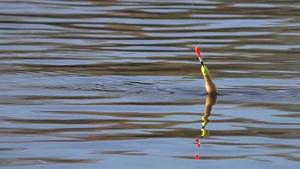
From the shore
When fishing from the shore for ide you need to look for:
- in the bays;
- on the border of direct and reverse flow;
- in places where tributaries flow into a body of water;
- under the trees and bushes growing at the water's edge.
From the boat
If fishing is done from a boat, the best places for fishing will be:
- reaches where ide finds many insects falling into the water in summer;
- eyebrows;
- pits;
- rifts, areas above and below rifts;
- to sections of the river where the channel narrows and the depth increases;
- shallows behind the islands;
- snags.
With a match fishing rod, which allows you to make long casts of several tens of meters, most of these areas can be fished from the shore.
In still water
If fishing takes place in a stagnant body of water, it is more difficult to find ide. You need to focus primarily on changes in depth and driftwood lying on the bottom, which can be found using an echo sounder.
On the current
When fishing on the current, typical feeding places for ide - bays, boundaries of direct and reverse currents, riffles - are clearly visible. Just like when fishing in still water, you can successfully catch ide on changes in bottom relief and near snags.
Fishing gear
Fishing for ide involves choosing a large number of different gears; the features of each of them are discussed below:
- A float fishing rod is used extremely rarely due to the complex fishing technique with its help, since it can show high efficiency only in places where high-quality camouflage can be achieved on the shore or in muddy water that does not allow the fish to see a person.
- Wiring fishing rod , which is usually used as a classic float tackle. This option is more popular because it reduces the requirements for camouflage, and the places where ide usually likes to rest or feed are not very deep.
- Fishing using a slowly sinking artificial bait is recommended to be practiced only by experienced fishermen, since this technique requires a long and unnoticed stay on the shore, as well as good knowledge of the features of the reservoir and the topography of its bottom.
- Donka becomes the main assistant if the angler is dealing with the most cautious fish, and it also allows you to fish out trophy specimens. With its help, you can try to pull out the ide near the rifts or near deep holes.
- The zherlitsa has not actually become widespread when catching this type of fish, but it still shows extremely positive results in many cases. The gear is installed around midnight, and checked for catch in the morning with the first rays of sunshine, when the ide becomes less active.
- Spinning fishing can be practiced in early spring, when the ice melts. At this time, the fish begins to eat, so nulevka spinners with a silver or golden sheen are well suited.
- You can catch this fish using special fishing nets , however, you will have to use a special technique. The tackle is secured to two boats, which are slowly carried away by the current. As a result, the net moves along the surface of the reservoir, collecting prey.
Tackle
A 5-meter carbon fiber rod is the optimal tackle for catching ide in the spring.
Equipped with rings and made of this material, it will have the necessary lightness and, most importantly, strength. By the way, it is advisable to install an additional, freely moving guide ring on the thinnest upper leg, which will give the rod tip strength and allow you to do without a landing net when fishing for a specimen weighing one and a half to two kilograms.
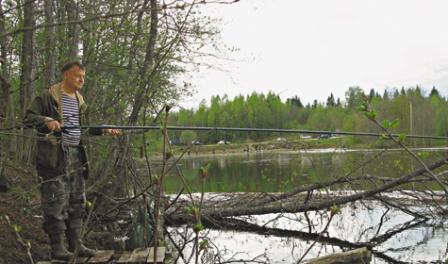
The reel should be inertial with a soft, free motion and a sufficiently large drum. It is this type of reel that helps you instantly respond to a bite and hook the ide in time, otherwise a strong and cautious fish will get off the hook!
To ensure that the float, which is usually pear-shaped, is not pressed against the sinker by a strong enough current, blind equipment is used. Simply put, the float, with its center of gravity in its lower part, should not move freely along the line.
A sinker in the shape of a large olive, weighing from 12 to 14 grams, is tied to the end of the main fishing line, the diameter of which is 0.23 - 0.25 mm. The leash is attached in the same place. up to 35 cm long and 0.20 – 0.22 mm in diameter.
Lure
Considering that ide often exhibits bursts of whimsicality and caution, it is recommended to feed the chosen place before fishing. Usually this process takes 2-3 days; peas, cake or various grain crops can be thrown into the water.
Already during fishing, it is recommended to continue to throw a small amount of bait mixture into the water, to which the prey has already become accustomed.
You can also prepare bait yourself; there are a large number of different recipes, below is an example of one of them:
- Steam the peas, which will be the main component of the mixture.
- Prepare flaxseeds, they should be half the size of peas. To begin with, this ingredient is fried and then ground.
- Fry the bran, you can take a little more quantity than flax seeds.
- After all the available ingredients have cooled, they will need to be mixed with each other.
- Add sprouted rye malt to the mixture, which is pre-ground in a meat grinder.
- After this, you can, at your discretion, add semolina, crayfish meat, finely chopped earthworms, as well as a small amount of gammarus or ground chafers.
- To give the mixture the necessary structure, you can add a small amount of clay from the reservoir where you will be fishing for ide.
Fishing technique
You need to catch ide early in the morning; just a few hours after sunrise, this fish goes hunting. Follow these guidelines:
- On the spot you need to behave as quietly as possible so as not to scare away the fish.

After casting, you should wait a little, 15-20 minutes. After this, cast the bait.- Wiring should be done slowly, with short pauses. The ide does not pay attention to the bait if it rushes past it at high speed; this should be taken into account when playing the game. Usually, the fish starts to peck when the float stops.
- When the fish has swallowed its prey and realizes that it has been caught, it begins to desperately resist. This manifests itself in the form of strong jerks of the fishing line; you should not cut sharply. You need to lower the rod as low as possible to the water and try to tire the fish a little, completely, controlling the whole situation.
- When the fish gets tired of struggling, it will begin to rise to the surface, at which point the prey can very often be lost. Therefore, it is worth slowly bringing the fish to the shore. With the help of a landing net, pulling it out will not be difficult. Just don’t put it in a cage with an open top, because the ide can make a sharp jerk and jump out to freedom.
You need to be extremely careful, because even tired prey can make a desperate dash and free itself at the last moment.
Ide is a desirable trophy for any fisherman. It is quite difficult to catch it, because the fish is cunning and careful, and finding a suitable place is not easy. But if you make an effort and carefully prepare for fishing, then success is guaranteed.
The best baits and lures
The ide is an omnivorous fish, which means there is a wide range of baits on which it can be caught. The process of their selection largely depends on the time of year when fishing is carried out:
- In winter , this fish is mainly interested in nutritious food of animal origin, so it is recommended to use bloodworms, bark beetles, and the larvae of various insects as bait. You can try artificial vertical spoons.
- In spring, ide's diet consists of caddis flies and worms, which is why they should be used as bait. You can also use small spinners of the rotating type.
- In the summer , catching with May beetles, large flies, maggots or dragonflies is effective; for bait of plant origin, you can use steamed peas or pearl barley.
- In the fall, you can also continue to use maggots, peas or pearl barley; artificial baits usually also show good effectiveness; it is recommended to use small-sized proppers.
What to lure with?
In muddy spring water, the most catchy bait is the burdock - a light brown larva with a reddish head and pronounced jaws. The easiest way to find it is in those places where the snow has already melted and the sun has dried the ground well.
We also recommend reading:
The ide fish, its difference from the chub and where it lives. Catching ide in the summer with a half-bottom. How to make a good spinnerbait with your own hands. Features of fishing with a three-hook balda in the winter.
The larva lives in clay-sandy or aluminous soil, where wormwood grows.
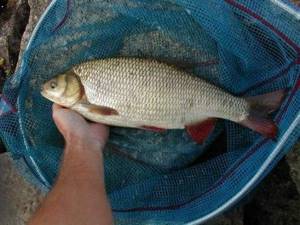
Larvae from 3 to 4 cm are the most optimal size; by placing several of them on a hook, you can safely expect an ide attack on such an attractive bait! Also, the larvae of the cockchafer and bark beetle work well as bait. Well, worms, bloodworms, maggots, too, should not be excluded. In general, it should be noted that it is often necessary to change baits, therefore, it is best when the angler has several types of bait at hand.
Fishing techniques and tactics: tips and tricks
Taking into account the caution and other character traits of the ide, it is necessary to follow certain tactics in the process of catching it. In particular, it is recommended to take note of the following tips:
- An ide that has sunk too close to the bottom must be caught and taken out from there, since, due to its nature, it is guaranteed not to float to the surface for the insects that are on it.
- The wiring carried out must have an extremely low speed, especially for spinners and most wobblers. This measure is necessary in order to minimize the movements of the petals, which can scare away prey.
- A slight tug or small poke indicates that the ide is just trying the bait. If the bite does not start after this, then you will need to repeat the cast to the same place.
- This fish can observe potential prey and begin an active attack only after 5-10 casts have been completed. It is recommended to change the style and speed of wiring as often as possible in order to quickly provoke the ide to attack.
- It is important not to forget about camouflage, since the ide’s vision allows it to notice the fisherman, after which it begins to behave extremely carefully and the chances of a bite tend to zero.
Time and place
It has been noted that the beginning of the ide process coincides with the swelling of the buds and the active movement of sap in the birch, usually in mid-April. In general, it should be noted that the more melt water in the river, the warmer the weather, the bolder the ide rises to its spawning grounds, and the more numerous its flocks are.
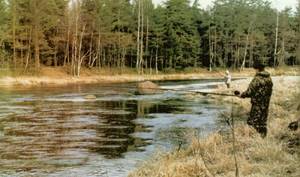
Determining the place for fishing for ide is not difficult; to do this, it is enough to know directly the bottom topography and the depth at the intended fishing point. Most often, the active bite occurs a little to the side of the main channel, in an area with a uniform, relatively calm current at a depth of no more than one, maximum one and a half meters. In principle, the bite itself can last throughout the day, but the next time of day is considered the most catchy time of day.
- Morning hours - from dawn until about 9, 10 in the morning.
- Around the 3rd day, the ide again begins to take the bait more confidently, and by the evening the bite reaches its apogee.
- At night they catch it with a donk, and the ide bites especially well before dawn.
Tactics for catching ide in summer
Fishing for ide in summer with a float rod works well on a clean bottom. From time to time it is worth pulling the float towards you - it is precisely such movements of the float and hook with bait that most often provoke a predator to attack. It may seem that the bite of an ide is similar to the moment it catches a snag or other obstacle, but this observation is erroneous. And here’s why: firstly, the ide bites are very sharp, and secondly, the float is almost completely hidden under water. During the first jerks, you don’t need to immediately drag the tackle, because such initial attempts can be just a test of the fish’s taste for the bait. This is how she checks its appetite and safety. So we wait and keep our bait. It’s worth hooking only after a few seconds. Since the ide is strong, you need to be prepared for its jerks and attempts to get off the hook. Fishing for ide in the summer is carried out without forcing, otherwise the line can be torn. We wait a little until the fish gets tired, and gradually bring it to our hands. The landing net will come in handy at the final stage of fishing.
It is worth hooking when the float goes under the water or begins to twitch from side to side. When hooking, we do not allow sweeping movements, otherwise the fish may get scared even before the moment of hooking and release the bait from its mouth.
Tips from experienced people for catching ide in summer
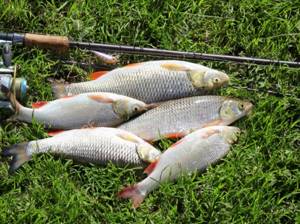
- Fishing for ide in the summer should be done with ultra-light tackle, but it must be strong and be able to absorb strong and sudden jerks of the fish during the fishing process.
- If you know areas on a reservoir with a clayey and silty bottom, then feel free to feed and throw gear into this area. An ide will probably appear here.
- In hot weather, fish often gather in deep holes where underwater springs are located. At night, she is not averse to going out to feed in the shallows.
- Lake ide is much more cautious and timid than its river counterpart, so if you do not keep quiet, neither good-quality tackle nor delicious food with bait will help.
Ide is not the easiest fish to fish for, but the excitement and emotions of catching it more than outweigh the expectations of its bite. Go ahead, use our tips - and then the summer ide will definitely get on your hook!
